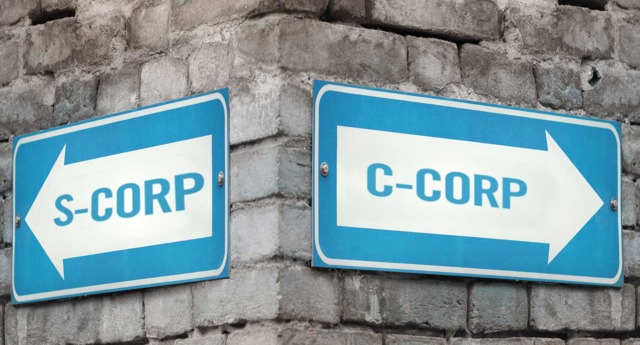Small Business
What Entity Structure Is Best for Active Income vs. Passive Income?
When it comes to passive vs. active income concerns, you should be ready to advise which structure makes the most sense for them and offers the best tax advantages.
Dec. 05, 2019

The legal entity your clients elect depends upon a lot of factors, including the business owners’ tax brackets, goals and objectives. When it comes to passive vs. active income concerns, you should be ready to advise which structure makes the most sense for them and offers the best tax advantages.
In general, passive income is income requiring little to no work to produce and maintain. The IRS uses the examples of income derived from property and equipment rental, but in some cases that could mean royalties if those royalties are not derived from participating in the business.
In addition, the IRS considers passive income to mean income from a business in which the taxpayer “does not materially participate on a regular, continuous, and substantial basis.” This could apply to partnerships, S Corps and some limited partnerships where the limited partner doesn’t have an active role in the day-to-day operations of the company. The IRS does not consider capital gains, interest or dividends to be passive income.
Active income, or “nonpassive income,” refers to monies received from businesses in which the taxpayer actively participates, such as by performing a service or selling a product. To be considered active income, the IRS defines “participation” as one of the following:
- The taxpayer works 500 or more hours in the business during the year.
- The taxpayer does the majority of the work in the business.
- The taxpayer works more than 100 hours in the business during the year, and no other staff works more hours than the taxpayer.
The following also qualify as nonpassive income:
- Salaries, wages, and 1099 commission income
- Guaranteed payments
- Interest and dividends
- Stocks and bonds
- Sale of undeveloped land or other investment property
- Royalties derived in the ordinary course of business
- Sole proprietorship or farm in which the taxpayer materially participates
- Partnerships, S Corporations, and limited liability companies in which the taxpayer materially participates
- Trusts in which the fiduciary materially participates
How Business Structure Fits In
Similar to how Sole Proprietorships, Partnerships and S Corps owners all pass through profits and losses for owners to claim on their personal tax returns, passive income is also passed through. The client’s business divides up passive income and expenses among the shareholders based on their stake in the business. The same is true for passive losses, but your client must keep passive income and losses separate from active income and losses. A loss from passive income cannot be applied to anything but the passive income.
In addition, if your client originally structured their business as a C Corp and then switched to an S Corp, the business has a limit on how much passive income it can earn. The issue evolves from the fact the corporation previously retained earnings and profits as a C Corp and did not pass these along to the shareholders/owners. The IRS therefore restricts an S Corporation from generating more than 25% of its gross receipts from passive income in any given year. If the business happens to make more than 25% of its earnings from passive income, the excess is taxed at the highest corporate income rate. If this happens in three consecutive years, your clients can expect to lose their S Corp status and be taxed as a C Corp once again.
The C Corp in the Age of New Tax Laws
Although the flat 21% tax rate established by the Tax Cuts and Jobs Act has lured some business owners to elect C Corp status, your clients could also be assessed another corporate tax called the personal holding company tax or PHC tax. PHC status is scrutinized every year and is determined by two tests: 1) an income test and 2) an ownership test. To be assessed the additional PHC tax, at least 60% of the company’s income must be from passive income sources, and five or fewer stockholders must hold more than 50% of the corporation’s stock.
If you must meet both those test requirements, you’ll be charged the PHC tax, which is 20% of the undistributed passive income. As a C Corp, your client can avoid the additional PHC tax by passing along a dividend of passive income to the shareholders.
In all other cases, tax rates on passive income varies depending on how long investments are held, the amount of passive income and your clients’ tax brackets.
=========
Nellie Akalp is a passionate entrepreneur, business expert and mother of four. She is the CEO of CorpNet.com, a trusted resource and service provider for business incorporation, LLC filings, and corporate compliance services in all 50 states. Nellie and her team recently launched a partner program for accountants, lawyers, and business professionals to help them streamline the business incorporation and compliance process for their clients.
